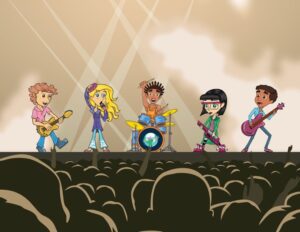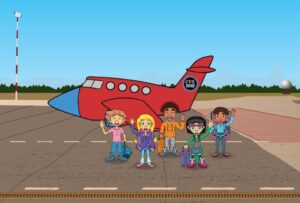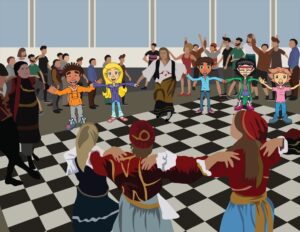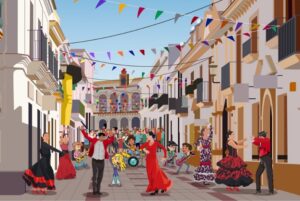By Dr Charles Margerison
Psychologist
Many people have asked why I created the virtual music group named the ‘Can Do Kids Band.’
The idea developed while travelling to different countries. In each new town and city that I visited, I was introduced to their sounds, songs, food, language and culture. I asked the local people about their music and they told me about their history and culture.
Therefore, I decided to develop a virtual band for Primary school students. The band play the music of the people they meet on their travels, and are exemplars of a ‘can do spirit.’

Firstly, I wrote the backstory for the band to explain how five students who met at an international music camp, became friends and then band members. With the help of a manager who they call Dr WIz, they set off on the ‘Follow the Music and Learn’ World Tour.

Each band member is from a different continent.
I have enjoyed the journey of discovery that developing a virtual band has taken me on. The music of a country tells the story of its rich history as well as the customs, culture and ways of life of its people.
I believe students who join the Can Do Kids Band on their world tour, will have a similar experience.
The motto of the band is ‘follow the music and learn’ – about the people and places in the countries they visit.

In discussion with teachers, I realized that these songs and styles provided an engaging way of helping students understand the ways of life in different societies. Music is used to engage, communicate and to help people express themselves. Also, dancing in all communities provides opportunities for people to interact and develop a shared identity.

The Can Do Kids Band has been designed to capture student’s interest and help them to understand the practical meaning of diversity. Teachers at the primary level have used the resources in innovative ways.

In these lessons, the teachers reported that students were very engaged. There was a high level of conversation and questions about the countries and communities.
In discussion with many teachers, interesting applications in a variety of subject areas have emerged. Students drew maps and images of a country to explore its geography and environment. Also, the resources provide opportunities for students to discuss the history of the people, their customs and ways of life, leading to improved cultural understanding. Underlying all of these applications, are the styles of music and the songs that students learn.

The Can Do Kids Band has therefore evolved into a cross curricular way of introducing students to different ways of life, and fostering intercultural understanding. This is particularly enhanced when there are students in a class who originate from the country being studied or have relatives living there. These students have the opportunity to be ‘cultural can do kids’ sharing their knowledge of a country.

It is good to see the ways in which the Can Do Kids Band inspires students to develop their own real and virtual applications. Some students decide to form impromptu music groups and write their own song lyrics. Topics such as protecting the environment can be suggested and musical instruments can be created to play in their performance of the song.
Students can travel virtually, choosing a country and exploring the music and ways of life of its people.
All of these applications help students develop a better understanding of people from other cultures and countries of our world.

Dr Charles Margerison, President and founder of Amazing People Worldwide, is a Psychologist. He is also President of Amazing People Schools. Dr Margerison has consulted widely for major organizations in the fields of organizational and educational psychology. He was previously Professor of Management at Cranfield University, UK, and the University of Queensland, Australia. He founded Amazing People Worldwide in 2006 and is supported by a dedicated global team. He previously co-founded Emerald Publications, and Team Management Systems and has authored more than 30 books. Dr Charles is also the creator of ‘Can Do Kids Worldwide, a virtual music group that helps students to learn about countries and cultures through music. He has also developed Imagineland, for early learners. You can follow him on Linked in .
For more information, please email info@amazingpeopleworldwide.com
Websites:



Copyright © 2021. Amazing People Worldwide.
All Rights Reserved.
This site is protected by reCAPTCHA and the Google
Privacy Policy and Terms of Service apply.



